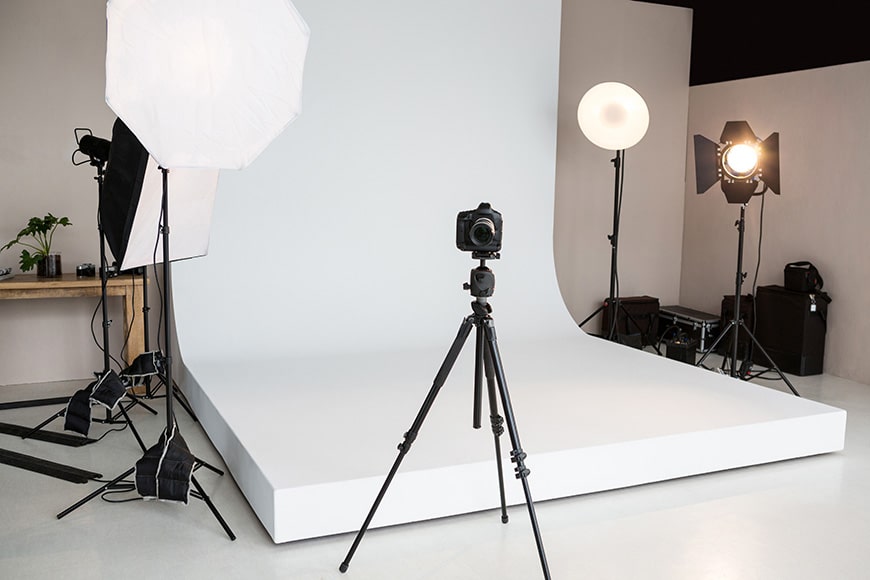What Type of Lighting is Best for Photography? Key Insights
As a professional photographer, one of the most critical decisions you will make is regarding the lighting you use. In the world of photography, the right light can make or break your image. Therefore, understanding what type of lighting is best for photography is essential. This article will delve into different types of lighting setups including natural light, artificial light, and various lighting techniques that can elevate your photography skills.

Understanding the Basics of Photography Lighting
Before diving into the types of lighting available, lets establish some foundational knowledge. Lighting can significantly affect the mood, texture, and clarity of an image. For instance, soft lighting is often used to create a dreamy, ethereal feel, while hard light can produce sharp contrasts that emphasize details. Therefore, knowing your lighting options will help you choose the right setup for your scenario.

The Importance of Color Temperature
Color temperature is another vital aspect of lighting that can transform your images. Different light sources emit different color temperatures, usually measured in Kelvin (K). Daylight is approximately 5500K, while tungsten light is around 3200K. Understanding these differences will play a key role when selecting your light sources, as they affect how colors appear in your photos.
Natural Light: The Photographer's Best Friend
When considering what type of lighting is best for photography, many photographers swear by natural light. Natural light comes from the sun and varies throughout the day. Early mornings and late afternoons provide the most flattering light, often referred to as the golden hour due to its warm tones.
Some benefits of using natural light include its affordability and the organic feel it brings to photos. However, it also requires patience and adaptability as conditions change rapidly. To make the most of natural light, it's essential to plan your shoots around this golden hour.
For further information on enhancing your outdoor photography sessions with natural lighting, you can check out this comprehensive guide.
Artificial Light: Control at Your Fingertips
When natural light isnt an option, artificial lighting steps in. This broad category includes several types of lights such as fluorescent lights, LED lights, and strobe lights. The primary advantages of artificial lighting are the complete control over the intensity, direction, and color. You can create the perfect mood or effect effortlessly.
For example, softboxes diffuse light to create flattering portraits, while umbrellas spread light over a larger area. You can achieve different effects by adjusting the distance of the lighting equipment from your subject, enabling you to manipulate shadows and highlights.
To learn more about the different types of artificial lighting and how they can be effectively used, visit this insightful resource.

Understanding the Different Types of Lighting Techniques
As a professional photographer, familiarity with various lighting techniques is crucial. Here are some common techniques you should master:
Rembrandt Lighting
Rembrandt lighting creates a triangle of light on the cheek opposite the light source, providing depth and drama to your portraits. This technique is particularly popular for its ability to enhance facial features and emotional expression, making it a valuable skill in your lighting repertoire.
Short Lighting
Short lighting occurs when the side of the face that is turned away from the light source is illuminated, creating depth and slimming effect in portraits. This technique is widely used for its flattering characteristics, especially with clients who are concerned about their appearance.
For more insights on short lighting, check out this informative article on short lighting.
Broad Lighting
Contrary to short lighting, broad lighting illuminates the side of the face turned towards the light source. This technique can create a more substantial look; therefore, it is often used for subjects with angular features or who want to appear more voluminous.
Backlighting
Backlighting is when the light source is positioned behind your subject. This technique can create beautiful silhouettes and adds a remarkable ethereal feel to your images. It requires careful composition to ensure the subject remains visible, but the results can be stunning when executed well.

Combining Natural and Artificial Light
Many professional photographers often combine natural and artificial light to achieve a balanced look. For example, using reflectors can help direct natural light onto your subject, softening shadows and enhancing your images. Alternatively, you could use artificial light to fill in shadows when shooting in harsh sunlight.
Effective use of both types of lighting can create unique atmospheres that are usually difficult to achieve with a singular source. Experimenting with these combinations can yield exciting and unpredictable results!
FAQ Section
What is the best time for natural photography lighting?
The best time for natural lighting is during the golden hour, which occurs shortly after sunrise and before sunset. This timing provides soft, warm light ideal for most photography types.
Can I use artificial light for outdoor shoots?
Yes, artificial light can be a valuable asset for outdoor shoots, especially when the sunlight is too harsh or when shooting during the middle of the day. Using fill lights or reflectors can help balance the light.
Is it necessary to invest in expensive lighting equipment?
While good lighting equipment can streamline your shoots and improve results, it is not strictly necessary. Understanding how to manipulate light effectively can often yield professional-looking results without the high price tag.
As an Amazon Associate, I earn from qualifying purchases.

